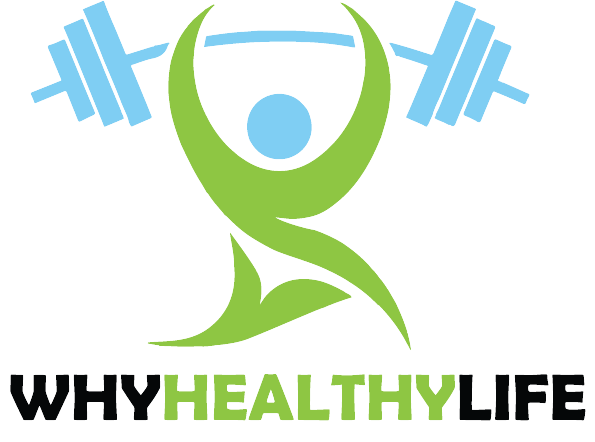It is thus important to take your time and learn as much as you can about food labels so that you can be in a position to make good choices about what you eat. In the present marketplace where socialization of foods is the order of the day, it is important that one should be aware of how to go about the reading of the labels of foods to be consumed. Here you will find a focused overview of sensible tips on reading elements of food labels and the ways they can be used to improve your eating habits.
Meta Description: Discover important strategies in order to learn how to read food labels and decipher nutritional facts. Learn how to choose better and ways to improve your nutrition with the help of our detailed guide.
What Are Food Labels?
Food labels contain very important details regarding processed foods, such as ingredients present, portion sizes, and nutrient contents. They act as a bridging function between the manufacturers and users by assisting people to make better choices of healthy foods.
Importance of Food Labels
One of the most important parts of nutritional control through diet is food labels because they provide information about food. They help consumers understand:
- What they are eating
- How much they are consuming
- Whether a product is capable of satisfying their dietary requirements
Key Components of Food Labels
1. Nutrition Facts Panel
The Nutrition Facts panel is an important part of the food labels that give a brief of the nutritional value of the product. Here are the key elements:
Serving Size
Serving size describes the amount of the product they suggest the consumer should take through consumption. It is essential to know how many calories and nutrients are put into each serving size. For instance, if the serving size is four portions and the whole packet is consumed, simply multiply the nutrient values for the whole amount to determine what has been ingested.
Calories
Calories are the collective energy contained in a serving. This is major since managing the amount of calories one consumes is crucial in managing one’s weight. Knowing how many calories you are taking in is essential in gaining or losing some weight in the process of bodybuilding or changing your lifestyle.
Macronutrients
The macronutrients are total fat, saturated fatty acids, trans fatty acids, cholesterol, sodium, total carbohydrates, dietary fiber, sugars, and proteins. Understanding these components helps you balance your diet:
- Total Fat: Explains the number of grams of total fat per serving. Reduce how much fat you take, especially foods rich in processed products and saturated fat, which can harm the heart.
- Saturated Fat: Excess consumption can cause a raise in cholesterol level, which is an added risk factor to heart diseases.
- Trans fats: They are common in baked products, margarine, frozen dinners, and store-bought cookies and cakes and can increase levels of LDL cholesterol and decrease HDL cholesterol.
- Sodium: Sodium makes blood pressure increase, and this point should be treated seriously. As much as possible, these should not be more than 2,300 mg per day on average.
- Total Carbohydrates: This applies to all forms of carbohydrates, including sugar and fiber carbs more. B carbohydrates: These include sweeteners, sugars, and fiber, and more. B
- Dietary Fiber: Recommended for digestion, try to consume at least 1/3 of your daily plate as fiber or 25g.
- Sugars: Try to watch your sugar consumption, because in large amounts it is not good for your health at all.
- Protein: Crucial in tissue construction and repair.
Vitamins and Minerals
It is always included on the Nutrition Facts panel; examples of these nutrients include Vitamin D, calcium, iron, and potassium. Some of these nutrients are very important to a healthy diet, and knowing of their existence will assist you in knowing how to get adequate intake levels.
2. Ingredients List
The last bit of information that has to be mentioned includes all the ingredients used in the production of the food product; they are marked in order of their proportion, in accordance with the size of their portion in a specific food product. Understanding this list helps you identify:
- Allergens: Nuts and dairy products, gluten products, and other usual food allergies causing agents’ labels should be easily seen by anyone.
- Additives and Preservatives: It has chemicals or has some sort of artificial nutritional additives or preservatives that you may want to avoid in the first place.
3. Health Claims
Often they provide some health claims on the labels of the foods they produce. Common claims include:
- “Low fat”: Has three or fewer grams of fat per portion size and includes a moderate amount of sugar and sodium.
- “High in fiber”: Has a minimum of 5 grams of fiber per serving.
- “Reduced sugar“: Contains 25% less sugar than in the standard version, even though they both refer to the same product.
As with most of these claims, it’s to the point where one needs to read the Nutrition Facts panel for a more holistic approach.
Foods and how to read their labels: Expert advice
1. Compare Similar Products
When doing your grocery store shopping, compare the meals’ nutritional facts & percent daily values’ labels. However, this strategy assists in finding the right products depending on the nutritional value that you want to achieve.
2. Focus on Whole Foods
Choose real, minimally processed foods that are essentially the number of ingredients allowed per meal. Label reading is not required when you select the healthy foods that include fresh fruits and vegetables, whole grain products, and lean meat.
3. Watch for Hidden Sugars
Canned or processed foods have extra sugars, which are not good for the body in many ways, for instance, causing obesity. You need to recognize sugars that might be hidden, so use checked lists of sucrose, glucose, fructose, and corn syrup.
4. Be Cautious of Portion Sizes
Portion sizes are relative, and that can be very confusing. There is always a tendency for most people to overestimate how much they eat or drink. Remember that the information is based on servings, and if you consume more servings, calculate your amount according to that.
5. Do Your Homework on What You Need to be Eating
Nutritional needs are very important to consider in order to make the right decision. It is important, therefore, to consult your doctor or a registered dietitian to get your individual nutrient needs assessed.
Conclusion
Some tips for reading food labels include the use of the traffic light system—this is the ideal way of knowing the nutrient values of foods being consumed. From the exposé on the important features of food labels, you are better placed to choose healthier foods and meet your dietary requirements satisfactorily.
Final Thoughts
While doing your shopping and especially when choosing foods, try to decipher food labels. These are the insights that enable the individual, as well as the family, to improve life longevity by taking better decisions for healthier living. Once again it is advisable and crucial for all of us to bear in mind that an informed consumer is a healthier consumer.
Related posts
Subscribe
* You will receive the latest news and updates on your favorite celebrities!
Quick Cook!
Navigating Food Labels: Understanding Nutritional Information
Reflexology: Tackling What We Know and What We Could Learn About Its Health Benefits
[instagram-feed feed=1]



